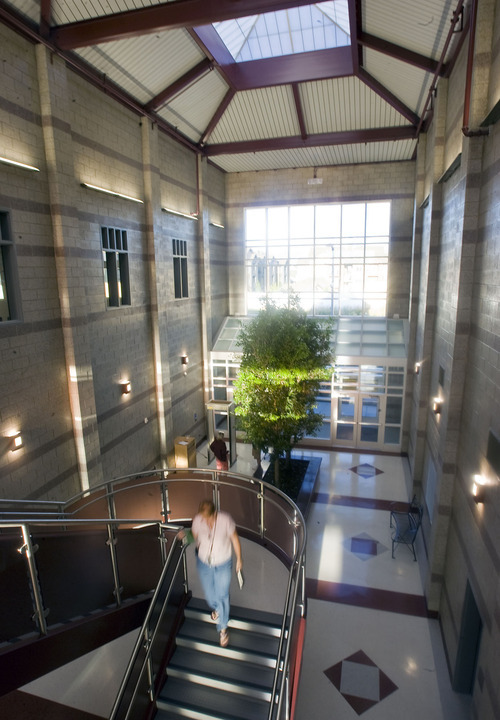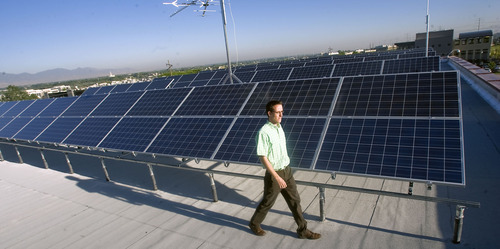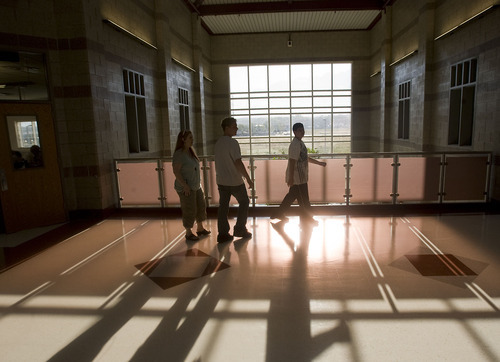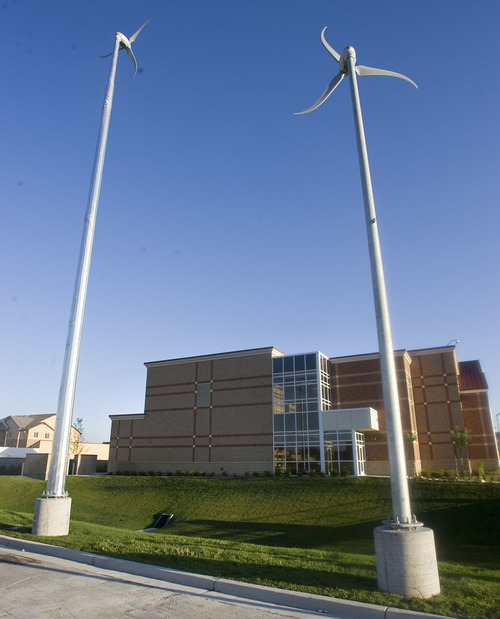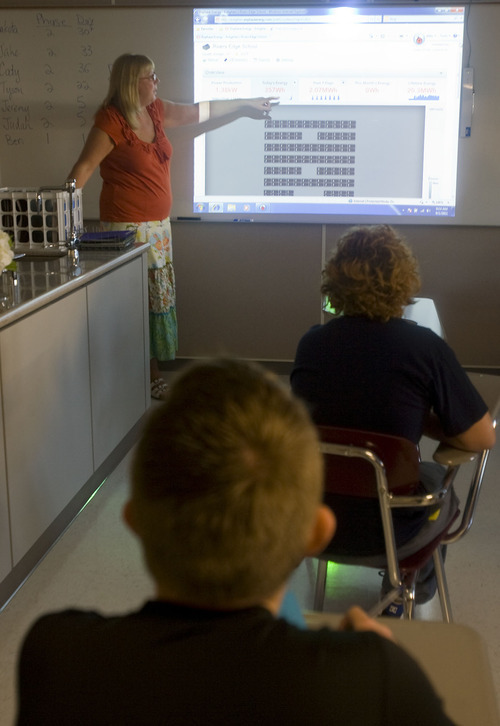This is an archived article that was published on sltrib.com in 2011, and information in the article may be outdated. It is provided only for personal research purposes and may not be reprinted.
South Jordan • If not for a trio of tall, white wind turbines on the south side of the building, the River's Edge School would look like any other newly built educational facility.
In reality, however, River's Edge is far from ordinary. The two-story structure is a model of energy efficiency and a haven for special-needs students who occupy it.
The school, which opened last month, is home to 35 students with behavioral, emotional, and social issues. Current students range in age from 9 to 19, though the school accepts those from elementary school to age 22. The River's Edge School operates on a ratio of one teacher for every five students."
The building is designed to provide students with an optimal learning environment while serving as a possible prototype for future cost-effective, environmentally friendly schools in the Jordan School District, said Jordan School District spokesman Steve Dunham.
Although it is too early to say how much money the school will save, Dunham said, early estimates are optimistic. On a recent day, the school's power meter was running backwards, signaling that the facility's solar panels and wind turbines were generating more power than the school was using.
"When we see things like that, we get really excited," he said.
The River's Edge School's first monthly power bill was $1,800, compared with the $8,000 to $10,000 it normally would cost to power a school of its size, said Richard Wardle, principal of the Utah-based electrical consulting firm BNA Consulting, which helped design the building. Wardle estimates that during a month when the building is fully occupied and teachers and students are using lights and computers, the bill might reach $3,000.
"We still think that's pretty darn good," he said.
The 48,000-square-foot facility was built using $8 million in federal stimulus money, Dunham said. It utilizes a combination of spray foam insulation and continuous rigid insulation to seal the structure and help maintain a constant temperature within the building.
Instead of traditional heating and air conditioning, the school has a ground source heat pump that circulates water to cool or heat the building, said Jeffrey Seare, principal of the Salt Lake City-based engineering consultant firm Olsen and Peterson, which contributed to the school's design.
During the summer, the circulating water releases heat from the building into the ground, and during the winter, heat is absorbed from the earth back into the water and used to warm the building.
"The ground source heat pump should prove itself to be 20 to 40 percent more efficient than a conventional heating and cooling system," Seare said.
On the roof, 230 solar panels generate electricity, which is supplemented with power created by the three wind turbines.
The solar panels alone are expected to generate 70,000 kilowatt hours of electricity a year, enough to power 6.5 homes, said architect Cory Ferguson of the firm Pasker Gould Ames and Weaver, which designed the River's Edge School. The panels are expected to provide between 50 and 65 percent of the school's total electrical needs, he said.
Students at the River's Edge School are already incorporating the energy efficient technology into their science lessons. Earlier this month, five students in Susan Spalding's classroom viewed the solar panels' output on an overhead projector and discussed the environmental factors that could affect electricity generation.
Spalding, a science and behavior teacher, said she plans to use the school's unique features to teach students about the practical uses of scientific concepts.
"When we start studying geothermal technology, we can see how that is applied in heating our building," Spalding said. "When we study graphs and charts, the students actually get to see how graphs are used in measuring the building's efficiency."
The school's energy output can be viewed on a website which other schools in the Jordan School District can use as a learning tool, said the River's Edge School Principal Julie Buckingham.
In addition to being energy efficient, the school features skylights, live indoor planters, an art room and a rock-climbing wall. Buckingham said the new facility is a far cry from the dilapidated 1920s-era building in which the school, formerly known as the Jordan Resource Center, was housed.
When parents dropped their special-needs students off at the old facility, she said, they often wondered if the school district was neglecting them.
"Now when a parent drives up, they say 'The district really feels like my student has value,'" Buckingham said. "The excellence of the facility matches the excellence of the program." —
Energy efficiency at River's Edge School
Opened in August
Serves special-needs students
48,000 square feet
230 solar panels
3 wind turbines
A ground source heat pump helps heat and cool the building



